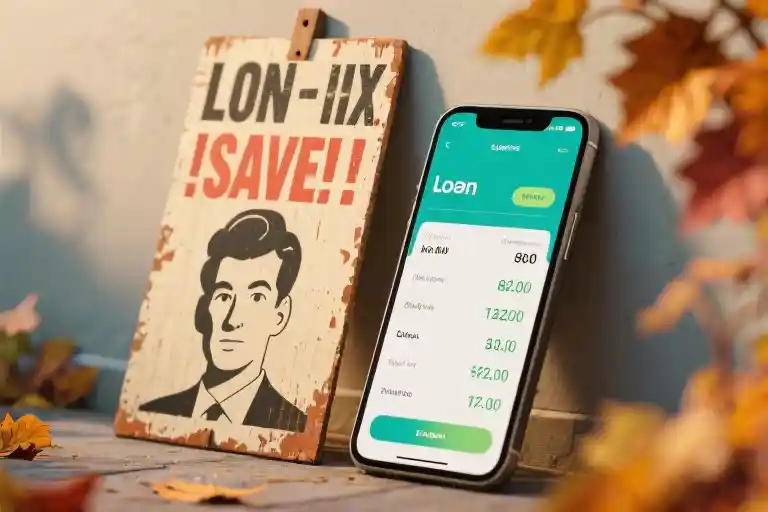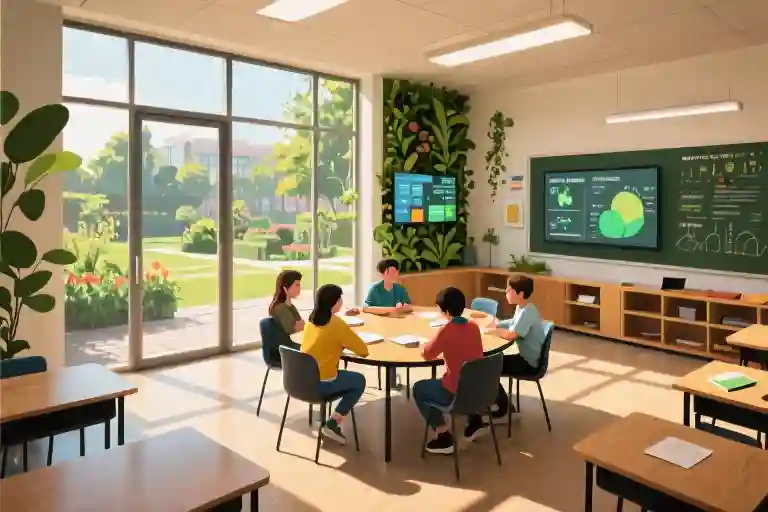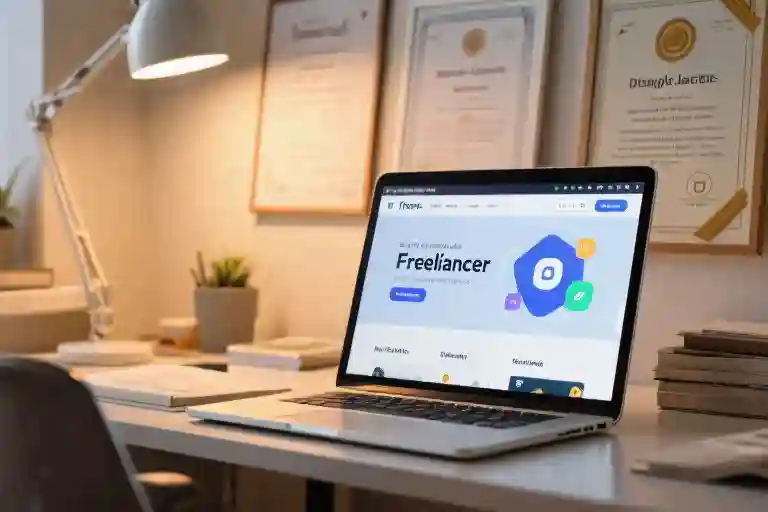The autumn air carried the scent of mimeograph ink and damp wool as hundreds of students pressed against the Sproul Hall steps. A nineteen-year-old mathematics major gripped the marble railing, her fingers turning white with tension as campus police pulled at her legs. ‘This is your university!’ she shouted into the megaphone that moments earlier had broadcast declarations about free speech and democratic participation. Behind her, a handmade banner quoting Jefferson flapped against the administration building’s columns—the same columns that would later frame tuition increase announcements and student loan advertisements.
That 1964 protest at Berkeley didn’t just challenge campus restrictions on political advocacy. It posed a fundamental question: Who owns higher education? For the Free Speech Movement activists, universities belonged to the public—spaces where young citizens developed moral frameworks and practiced democracy through constant negotiation between individual rights and collective responsibility. The megaphone that amplified their demands symbolized this vision: education as dialogue, as confrontation, as shared ownership.
Six decades later, another sound dominates college campuses—the vibration of payment notifications on smartphones. The average student now checks their bank app more frequently than they visit professors’ office hours. That same Sproul Plaza where students once debated Marxist theory now hosts corporate recruiters assessing candidates’ ‘return on investment potential.’ The transformation from democratic agora to transactional marketplace didn’t happen overnight. It was the quiet victory of one educational philosophy over another, a victory so complete that many struggle to imagine alternatives.
This is the story of that transformation, told through two parallel realities. Two versions of a student named Tracy—one nurtured by the democratic ideal that briefly flourished after 1964, the other navigating the neoliberal reality that took its place. Their diverging experiences reveal how policy shifts rewritten in legislative offices and faculty lounges manifest in dorm rooms and family conversations. More importantly, they show what’s possible when we reclaim education’s civic purpose.
The Tracy attending college in the protest movement’s aftermath experiences education as her professors did—through collaborative governance. Her Tuesday begins with a call to her father, a former activist, as they discuss her presentation to the city council about food insecurity solutions. Later, her political theory professor cancels the scheduled lecture to facilitate a discussion about that morning’s campus worker strike. ‘Power concedes nothing without demand,’ the professor quotes from DuBois as students rearrange desks into a circle. When Tracy mentions struggling with the reading, the professor pulls a worn paperback from her bag—’Keep this copy; my mentor gave it to me when I was your age.’
Contrast this with the Tracy of 2024, whose Wednesday starts with the glow of a banking app ($23.61 remaining after last night’s textbook purchase) and a rushed instant coffee. Her economics professor—an adjunct racing between three campuses—has no office hours listed. The automated reply to her email suggests checking the FAQ document. At noon, administrators reject her proposed teach-in on housing justice as ‘too disruptive during accreditation reviews.’ By evening, she’s calculating whether to skip dinner with friends to afford next month’s health insurance payment. When she finally collapses into bed, her father’s reassuring text (‘You’re doing everything right!’) rings hollow against the reality that doing everything right no longer guarantees stability, let alone fulfillment.
These parallel narratives expose the hidden curriculum beneath official university mission statements. One Tracy learns citizenship through practice; the other learns compliance through exhaustion. Both experiences stem from deliberate choices—not about education’s content, but its purpose. As we’ll see, the chasm between these realities originates in the 1970s clash between two visions: the New Left’s participatory democracy and neoliberalism’s market fundamentalism. Understanding this history isn’t academic nostalgia—it’s the first step toward repairing our broken system.
What makes this moment urgent is the growing recognition that the neoliberal consensus is failing. Student debt now exceeds $1.7 trillion while degree value becomes harder to quantify. Faculty working conditions have deteriorated to the point where 70% of teaching occurs off the tenure track. Most damningly, young people report feeling less equipped for civic engagement than any generation since World War II. The very things the 1964 protesters feared—the corporatization of learning, the privileging of private gain over public good—have come to pass with startling completeness.
Yet traces of the alternative remain. In community colleges that prioritize local needs over prestige metrics. In student cooperatives that govern their living spaces democratically. In the surging unionization efforts among graduate students and adjunct faculty. These fragments hold the blueprint for reconstruction—if we choose to see them not as exceptions, but as beginnings.
The pages ahead will guide you through this reclamation project. We’ll examine how specific policy changes (from Pell Grant restructuring to the rise of managerial administration) reshaped daily campus life. We’ll analyze why the neoliberal education model persists despite its failures. Most crucially, we’ll explore how today’s students, parents, and educators are adapting historical tactics—from debt strikes to democratic curriculum design—to forge a third path beyond the false choice between 1960s idealism and 2020s resignation.
Because the truth hidden beneath the loan statements and overworked faculty is this: College wasn’t always about debt and job prospects. Once, it was about democracy. And with courage and clarity, it can be again.
The Legacy of the Free Speech Movement
The crisp autumn air of 1964 carried more than fallen leaves across UC Berkeley’s campus. It carried voices – young, determined voices chanting slogans that would redefine American higher education. On October 1st, former student Jack Weinberg sat defiantly at a card table surrounded by 3,000 supporters, refusing to leave until administrators acknowledged students’ right to political advocacy. When police attempted to arrest him, the crowd spontaneously surrounded the squad car, transforming it into an impromptu speaker’s platform for 32 hours.
This wasn’t about cafeteria food quality or dormitory regulations. The Free Speech Movement (FSM) articulated something more fundamental – that universities should be laboratories for democratic participation, not just credentialing factories. Mario Savio’s famous Sproul Hall steps speech still echoes: “There’s a time when the operation of the machine becomes so odious… you’ve got to put your bodies upon the gears.”
The Port Huron Blueprint
Two years earlier, 59 students gathered at a Michigan AFL-CIO camp to draft what became the New Left’s manifesto. The Port Huron Statement’s section on education reads like an alternate reality today:
- Participatory Governance: Students and faculty jointly determining curriculum
- Civic Mission: Campuses as hubs for community problem-solving
- Knowledge for Liberation: Education challenging power structures
Tom Hayden’s original draft contained a prescient warning: “If the universities fail to produce radical changes in society, they will become irrelevant except as finishing schools.”
Three Pillars of Democratic Education
- Engagement Over Observation
- 1964: Students organized “Freedom Schools” to teach voting rights
- Today: Service-learning requirements often lack political dimension
- Critical Thinking as Standard
- Then: “Question Authority” banners festooned dorm windows
- Now: Career centers coach students to “leverage human capital”
- Institutional Accountability
- Past: Students demanded trustees divest from apartheid South Africa
- Present: Endowment investments remain largely opaque
A telling artifact: The FSM’s original card table now resides in the Bancroft Library, while today’s equivalent – the corporate-sponsored “free speech zones” – come with pre-approved amplification permits and liability waivers.
The Unfinished Lesson
The movement’s most radical idea wasn’t its tactics, but its premise – that universities exist primarily to serve democracy rather than individual career advancement. This vision briefly flourished: by 1969, over 200 campuses had established experimental colleges emphasizing community engagement.
Yet walking through Berkeley today, the contradictions emerge:
- Sproul Plaza still hosts daily protests… adjacent to Chase and Bank of America ATMs
- The Free Speech Movement Café serves $7 artisan lattes
- Savio’s steps now lead to an administration building housing the Office of Student Debt Management
The tension between these realities encapsulates our central question: How did institutions meant to cultivate democratic participation become engines of individual debt accumulation? The answer lies not in some natural evolution, but in the deliberate policy choices we’ll explore next – choices that Tracy’s father witnessed unfolding in real time.
The College That Could Have Been
Tracy’s Tuesday morning ritual begins before sunrise. The steam from her coffee curls upward as she balances her phone between her shoulder and ear, scrolling through notes for her upcoming City Council presentation. On the other end of the line, her father’s voice carries the warmth of decades of shared conversations about civic engagement.
“We’re proposing community kitchens in food desert neighborhoods,” she explains, tapping her pen against a highlighted section of the proposal. “The data shows—”
“Wait,” her father interrupts gently, “explain it to me like I’m one of the council members who’s never missed a meal.” The laughter between them carries the unspoken understanding that democracy thrives on these small acts of translation—of making complex issues human.
When Classrooms Felt Like Town Squares
Later that morning, Professor Alvarez kneels beside Tracy’s desk to examine a draft of her project. The photograph pinned above Tracy’s workspace captures this moment perfectly: a gray-haired academic in a worn corduroy blazer crouched at eye-level with students, his finger tracing the outline of a community map drawn on butcher paper. This is what participatory education looks like—not the hierarchical lecture halls of stereotype, but what students in the Free Speech Movement might have called “the practice of freedom.”
Three details define this alternate educational reality:
- Time as a Shared Resource: Office hours stretch as long as needed, with professors regularly canceling administrative meetings to continue discussions
- Curriculum as Lived Experience: Coursework directly connects to city council proposals, with academic credit given for community problem-solving
- Assessment Through Action: Grades reflect not just comprehension but real-world implementation of ideas
The Messy Miracle of Democratic Spaces
That evening’s community meeting exemplifies the college’s philosophy. In a room smelling of stale coffee and fresh markers, residents debate amendments to Tracy’s proposal:
- Ms. Rivera from 3rd Street: “The kitchen needs late hours for shift workers”
- Mr. Thompson, local grocer: “What if we connect this to our surplus produce program?”
- Tracy: “We could prototype that in the urban agriculture course next semester”
The whiteboard becomes a living document, its colored lines tracking how a student project evolves through collective wisdom. This is education as the Port Huron Statement envisioned—not just preparation for democracy, but its daily practice.
The Infrastructure of Hope
What makes this parallel educational universe possible? Key structural differences emerge:
| Element | Democratic Model | Current Reality |
|---|---|---|
| Faculty Time | 60% community engagement | 80% administrative compliance |
| Funding Flow | Direct municipal partnerships | Corporate sponsorship deals |
| Success Metrics | Civic problem-solving cases | Job placement statistics |
Tracy’s father recognizes the significance when watching her presentation via livestream. The way she references a disabled resident’s suggestion, the ease with which she adjusts proposals based on real-time feedback—these are the skills no standardized test measures, but which every functioning democracy requires.
As he texts his praise afterward, he realizes this version of college isn’t nostalgic fantasy. It’s the proven model that once existed, and could again—if enough people remember education’s higher purpose beyond private returns on investment.
The College We Got Instead
The glow of Tracy’s phone screen casts harsh light across her face at 6:15 AM. Her banking app displays the brutal arithmetic of modern student life: $23.61 remaining after last night’s automatic loan payment. The numbers pulse like a warning sign as she reaches for the instant coffee – the kind that comes in individual packets she stockpiles from the dining hall.
“Three shifts this week should cover groceries if I skip the bus twice,” she calculates while stirring powdered creamer into the mug. The steam rises in ghostly swirls, carrying none of the rich aroma from her father’s stories about campus coffeehouses where professors and students debated through the night. Her Econ 101 syllabus explicitly prohibits food in the lecture hall.
The Email That Stung
Between gulps of lukewarm coffee, Tracy refreshes her inbox. There it sits – the rejection notice from Student Activities:
“After review, your proposed Teach-In on ‘Housing Justice in Our Community’ cannot be approved under Campus Policy 4.7 regarding partisan events. Consider reframing as a career preparation workshop with our Corporate Partnerships Office.”
Her thumb hovers over the screenshot button. She wants to send it to her dad with a sarcastic caption, but stops. He wouldn’t understand why a discussion about local rent control qualifies as “partisan.” The man who proudly displays his 1972 protest signs in the basement would probably say “Just find another way!” as if bureaucracy hadn’t become a labyrinth since his day.
The Professor Who Wasn’t There
By 9:02 AM, Tracy’s already slipping into the back row of the economics lecture. Professor Chen (adjunct, also teaching at two other colleges this semester) doesn’t look up from her slides about market efficiencies. Last week’s office hours waitlist had 27 names; Tracy’s email about the loan repayment formulas went unanswered.
“She seems nice when she’s not exhausted,” Tracy thinks, watching the professor rub her temples between slides. The teaching evaluation on Tracy’s desk includes a new section: “How has this course prepared you for employment?” with bubble choices but no space to write *”I’m just trying to understand why my debt grows faster than my opportunities.”
The Bus That Left Without Her
Moonlight reflects off the empty bus shelter’s plexiglass at 10:47 PM. Tracy’s phone battery dips to 8% as she recalculates the walk back to campus – 1.6 miles in shoes meant for waitressing, not hiking. The unpaid community health practicum ran late again, making her miss both the study group and the last campus shuttle.
“Dad’s old stories always had people crashing on couches after midnight strategy sessions,” she muses, tightening her scarf against the wind. “Now we get automated emails about ‘building professional networks’ while literally missing the bus.” Her Lyft estimate shows $14.50 – exactly what she’d saved by bringing lunch from the food pantry yesterday.
The Silence That Speaks Volumes
Back in her dorm, Tracy stares at the loan servicer’s website. The interactive repayment simulator offers three options:
- Standard Plan: $387/month for 10 years
- Income-Based: $214/month (balance grows annually)
- Forbearance: Kick the can for 12 months
Her father’s framed diploma hangs above the desk, the university seal gleaming under LED strips. When she calls him, neither mentions the $62,000 figure blinking on screen. Instead, they talk about the weather back home, Aunt Linda’s new puppy, anything but the unspoken question: When did ‘investing in yourself’ become a euphemism for financial roulette?
“Get some rest, kiddo,” he says finally. The line goes quiet in that particular way when both people have too much to say. Outside, a car stereo blasts a song Tracy’s never heard before – some current hit the alumni magazine would call “the soundtrack of campus life!” She closes her laptop, leaving the loan calculator open like an unanswered challenge.
How Policy Stole the Future
The difference between Tracy’s two college experiences isn’t accidental – it was designed. While students were marching for change in the 1960s, a quieter revolution was happening in policy circles that would fundamentally reshape higher education. What began as subtle shifts in the 1980s became a full-scale transformation of how we fund, deliver, and think about college.
The Great Disinvestment
The turning point came with a series of policy changes in the 1980s that treated education less as a public good and more as a private commodity. Federal funding formulas were rewritten, shifting from direct institutional support to student loans. State legislatures followed suit, cutting appropriations while tuition climbed.
- 1980: Federal student loan limits doubled under the Middle Income Student Assistance Act, making debt the default financing option
- 1986: Tax Reform Act eliminated deductions for student loan interest
- 1992: Higher Education Amendments created the direct lending program, streamlining the debt pipeline
These weren’t isolated policy tweaks – they represented a philosophical shift. As Tracy’s father recalls: “We thought it was just budget tightening. No one explained we were trading public investment for personal debt.”
Case Study: The Vanishing Campus Bookstore
The transformation becomes visible in small but telling changes. Consider the campus bookstore – once a hub where students bought used textbooks from each other and faculty recommended affordable editions. By the late 1990s, these independent stores were replaced by national chains with standardized ISBN pricing and shrink-wrapped bundles.
“I remember when our bookstore got rebranded,” Tracy’s father says. “Suddenly there were no more handwritten course reading lists – just corporate-approved packages with access codes that expired after one semester. We joked about the new logo, but missed the bigger picture: knowledge was becoming a product with planned obsolescence.”
The Adjunctification of Learning
Parallel changes reshaped who taught college courses. In 1975, nearly 80% of faculty were tenure-track; by 2020, that number flipped with over 70% being contingent instructors. This “adjunctification” meant professors like the one Tracy couldn’t meet with were teaching at multiple campuses just to make ends meet.
The Human Impact:
- Average adjunct pay: $3,500 per course
- 25% qualify for public assistance
- 80% report having no office hours space
“When I was in college,” Tracy’s father reflects, “my professors lived in the community. We’d bump into them at the grocery store, continue discussions over coffee. Now most instructors are commuting between institutions, grading in their cars between classes. How can mentorship survive that?”
The Bait-and-Switch Generation
These policy shifts created what sociologists call “the bait-and-switch generation” – students like Tracy who were promised the college experience their parents had, but entered a fundamentally different system. The numbers tell the story:
| Metric | 1980 Value | 2020 Value |
|---|---|---|
| Avg. Tuition | $2,550 | $10,560 |
| Avg. Debt | $9,500 | $37,000 |
| Grads w/Jobs | 78% | 51% |
“We thought we were giving our kids a head start,” Tracy’s father confesses. “Instead we signed them up for a rigged game where the rules changed mid-play.”
Reclaiming the Narrative
The good news? Policy changes can be reversed. Across the country, new movements are:
- Pushing for tuition-free community college programs
- Advocating for student debt cancellation
- Supporting faculty unionization efforts
- Demanding transparent budgeting from administrations
As Tracy’s father now realizes: “Silence is what got us here. Speaking up – to legislators, trustees, anyone who’ll listen – is how we fix it.” His advice to other parents? “Stop just writing tuition checks. Start asking why they’re so large.”
This isn’t about nostalgia for some golden age. It’s about building an education system that serves democracy again – one where the next Tracy can focus on learning rather than surviving.
From Frustration to Strategy: A Student Organizer’s Playbook
The cafeteria table shakes as Tracy slams down her laptop, the screen displaying yet another denied event request. Around her, three classmates exchange knowing looks – they’ve all hit the same bureaucratic walls. But where administration sees ‘too political’, they see necessity. This is how campus organizing begins: not with grand manifestos, but with shared glances between people who refuse to accept ‘no’ as the final answer.
Finding Your First Allies (Without Burning Bridges)
- Start with shared inconvenience
- That professor who always runs overtime? The perpetually broken dorm laundry? These are your coalition building blocks. When Tracy organized around the 45-minute wait for campus shuttles, she discovered nursing students needing clinical transport and dining workers with late shifts – suddenly it wasn’t ‘complaining’ but collective problem-solving.
- The 3-5-7 Rule
- 3 committed people can start a movement (you plus two friends)
- 5 makes it official (your RA, that outspoken TA)
- 7 guarantees sustainability (the barista who knows everyone’s schedules)
- Stealth Recruitment
- Leave annotated copies of The Port Huron Statement in study carrels
- Use class Slack channels to float ideas (‘Anyone else think our tuition should cover mental health services?’)
City Council Speaking Guide (With Template)
Before You Go:
- Research which council members have education backgrounds (hint: check their campaign websites)
- Prepare 3 tangible asks (not ‘fix everything’ but ‘allocate 5% of ARPA funds to textbook subsidies’)
90-Second Speech Template:
“Good evening. As [role] at [institution], I’ve seen firsthand how [specific issue] affects [affected group]. When [personal story], it showed me [systemic problem]. Tonight I urge you to [specific action], which would [concrete benefit]. This isn’t just about [immediate issue] – it’s about whether our city values [larger principle]. Thank you.”
Pro Tip: Arrive early to sign up first – tired council members perk up at fresh voices.
Student Debt Strike FAQ (What They Don’t Tell You)
Q: Won’t this destroy my credit?
A: Unlike mortgages, most student loans don’t report to credit bureaus until 90+ days delinquent. Use that window strategically.
Q: How do we get media attention?
A: Tie your story to trending issues:
- ‘As Biden considers loan forgiveness, we’re taking direct action’
- ‘This is what the #GreatResignation looks like for graduates’
Q: What’s our leverage?
A: Alumni donations. Organize pledge drives where donors withhold funds until demands are met. Suddenly your $50K debt becomes the school’s $5M problem.
The Professor Whisperer Strategy
Overworked adjuncts want to help but risk their jobs. Try these approaches:
- Ask for ‘historical examples’ of student movements during office hours
- Request feedback on ‘hypothetical’ protest materials
- Invite them as ‘expert witnesses’ rather than endorsers
Your First Week Action Plan
- Monday: Map power structures (who actually approves event requests?)
- Wednesday: Coffee with the most connected work-study employee
- Friday: Test-run a 90-second speech at student government public comment
Remember: The administration’s greatest weapon is your belief that change is impossible. Their second greatest? Your belief that it should be easy. Tracy’s father fought for a world where education meant more than debt – now it’s your turn to make that real.”
A Letter to the Future
[Handwritten scan appears here with visible creases and coffee stains]
Dear Fellow Citizens,
When my daughter Tracy was born, I tucked two things into her baby book: a photo from my 1968 sit-in and a faded tuition receipt from City College ($87 per semester). Today, as I watch her struggle with loan statements bearing amounts we’d have considered typos in my youth, I finally understand what we failed to protect.
We won the right to protest but lost the vision of what we were protesting for. The university we fought to make democratic became a marketplace we allowed to be commodified. This wasn’t inevitable—it was the result of small surrenders we mistook for pragmatism:
- When bookstores replaced discussion corners with brand displays
- When “career readiness” eclipsed “civic engagement” in mission statements
- When we nodded along to “return on investment” rhetoric
Three Things I Wish I’d Done Differently:
- Asked “Who Benefits?” Every policy change that chipped away at education’s public purpose came wrapped in reasonable language about “efficiency” and “choice.” We should have demanded: efficient for whom? Whose choices expand?
- Valued Time Over Stuff We gave Tracy childhoods full of gadgets but empty of unstructured afternoons. No wonder a system valuing productivity over contemplation feels normal to her generation.
- Shared My Doubts In trying to be her rock, I hid my own educational regrets. Our children need to know even committed activists second-guess their paths.
Where We Go From Here:
For Parents & Mentors
- Host a “College Stories” potluck where generations compare campus experiences (sample discussion prompts included below)
- Audit local school board meetings using this interactive checklist to track corporate influence
For Students
- Start small but start now
- This Wednesday: Eat lunch near someone you disagree with
- Next month: Propose one syllabus change using this template
- Document the hidden curriculum
- Photograph every “student debt relief” poster torn down within 24 hours
- Record the ratio of career counselors to mental health staff





